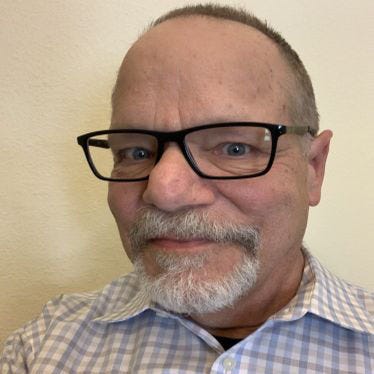Eroding language diversity threatens future botanical ingredient discovery
Much of the knowledge of medicinal plants is locked up in indigenous languages that are disappearing at an accelerating rate.

Much has been said about the potential threat climate change poses to botanical ingredient supplies. But a cultural development—the ongoing loss of languages—is a less visible but perhaps even more insidious process that bodes ill for the future supply chain by eroding knowledge rather than the plants themselves.
Medicinal plant use and languages coevolved
Humans have been making medicinal use of plants for possibly as long as 60,000 years, thus long predating the development of written language. (Language use itself is thought to be at least 200,000 years old, or possibly much older.)
This process of phytomedicine has gone on for the past several thousand years; however, almost all of the knowledge that has been developed and passed down on a grassroots level was done in native languages.
Case study: Quebec
Addressing this topic was an important part of a project that was detailed in a recent webinar series, “Naturally Informed—Reimagining Botanicals.” The session, titled Modern Ethnobotany, was presented by Alain Cuerrier, Ph.D., of the Montreal Botanical Garden and the International Society of Ethnobotany, and Pierre Hadad, Ph.D., head of the consulting firm Phytothera and pharmacology professor at the University of Montreal.
The two laid out a project that had been conducted several years ago to investigate the anti-diabetic potential of some plants of the arboreal forest, notably white spruce (Picea glauca) as well as several others. Plants in this region are sometimes overlooked in the medicinal plant game, as the focus is often placed on the more diverse and fecund regions of the globe, notably tropical regions, whether rainforests or otherwise.
Many of the plants of the taiga region—specifically parts of north central Quebec near Hudson Bay and James Bay—must deal with harsh environmental swings, the two ethnobotanists noted.
Those conditions include winter temperatures that remain far below freezing for consecutive months, and many weeks with very little sunlight. Conversely, the plants are confronted with a summer in which the sun sets only briefly, meaning they must be adapted for almost around-the-clock metabolic activity. Such stressors give rise to the kinds of bioactive constituents that have medicinal potential, Cuerrier and Hadad said.
A key element of their investigation was to unlock the knowledge housed within the community itself. To do that, they needed to speak Cree, the language of the First Nation group most common in that area.
Time running out for capturing indigenous knowledge
Cuerrier told the audience that getting this knowledge translated into modern digital formats is becoming increasingly pressing.
“If you talk with healers, you’ll know they have lots of knowledge to share about the medicinal diversity in their area,” he said. “But we are on the edge where everything is eroding, not only biodiversity, but what we call in my field biocultural diversity.”
In 1930, Cuerrier noted, about 15,000 languages were spoken in the world. Now, that number is about 6,000.
A paper published in 2021 in the PNAS (Proceedings of the National Academy of Sciences) journal provided additional insight into the scope of the problem. Written by researchers associated with a university in Switzerland, the paper (“Language extinction triggers the loss of unique medicinal knowledge”) matched up what the authors called “medicinal plant services"—or the health properties of plants—with the languages in which that knowledge was codified.
Majority of medical plant knowledge locked up in vanishing languages
What they found was sobering: In three regions surveyed —North America, South America (specifically the Amazon Basin) and New Guinea—the vast majority of mentions of these medicinal plant services are found in one language only. That ranged from 73% of mentions in only one language in North America to a high of 91% in the Amazon.
As globalization marches onward, the monolithic nature of modern culture threatens this heritage, the authors said. They sounded a similar alarm about a looming inflection point as did Cuerrier.
“A recent study in Papua New Guinea showed that only 58% of 6,190 students, compared to 91% of their parents, are fluent in indigenous languages,” the researchers disclosed.
For context, the authors noted only about 6% of higher plants around the world have been screened for bioactivity in modern lab settings.
“The predicted extinction of up to 30% of indigenous languages by the end of the 21st century would substantially compromise humanity’s capacity for medicinal discovery,” they concluded.
ABC exec: Magnitude of problem almost overwhelming
Stefan Gafner, Ph.D., chief science officer of the American Botanical Council (ABC), said the alarm sounded by the authors is grave indeed and deserves more attention.
“If we accept that cultural diversity is of great value to humankind, we can conclude that the loss of language, and hence different ideas and knowledge, is a huge issue and challenge,” he said. “The paper certainly provides a lot of food for thought, and—to be honest—makes me feel rather overwhelmed in the face of what is going on regarding the cultural loss and helpless with regard to providing a solution.”
Gafner noted most of the botanical ingredients important to the supplement industry came out of medicinal traditions in populous regions of the globe, such as China, India and Europe. In these cases, language loss has not restricted the botanical ingredient supply.
But what could be lost is access to possibly unique plants containing as yet uncharacterized compounds.
“There is no reason to believe that there aren’t as many important medicinal plants used by cultures where only a few thousands speak the same language,” Gafner said. “As such, we stand to miss out on a good portion of the herbal medicines available on our planet.”
“While the documentation of medicinal plant use by indigenous people is of utmost importance, we should also strive to do a much better job at protecting the indigenous people and the languages that go along with it,” he added. “It is unfortunate that some of these nations will disappear in part because they don’t have the population numbers to give them a voice loud enough to be heard.”
Case study: American Samoa
Holly Johnson, Ph.D., chief science officer of the American Herbal Products Association (AHPA), said she has experienced this loss of knowledge firsthand. Johnson, who was trained as an ethnobotanist, did much of her earlier field work in American Samoa, an area that has been heavily impacted by the influx of modern culture and the erosion of traditional languages.
Johnson found many of the younger people she talked to no longer knew the Samoan names of local plants that had fallen into disuse because they had been supplanted by “modern” crops. That also extended to the cornucopia of medicinal plants found in the wooded areas away from the farm fields.
“I got into this whole racket because of the cleverness of indigenous healers,” Johnson said. “They’d know things about plants like to only harvest them at a certain time of year or even a certain time of day.”
"When you don’t know the language, you miss a lot of the nuance,” she continued. “It’s not just knowing the name of the plant. It’s knowing the processing and harvesting techniques. Maybe there is a preferred taste of a botanical or even an aroma that will determine how that plant behaves in the body.”
Johnson concluded: “The kids don’t want to sit in a hut in the forest with grandma and learn this herbal knowledge."
Experts around the world share the concern about how the loss of languages is affecting human cultural heritage, and not just in the realm of traditional medicinal knowledge. Solutions are few, but the United Nations has proclaimed 2022-2032 as the International Decade of Indigenous Languages as a way to raise awareness of the issue.
About the Author
You May Also Like

